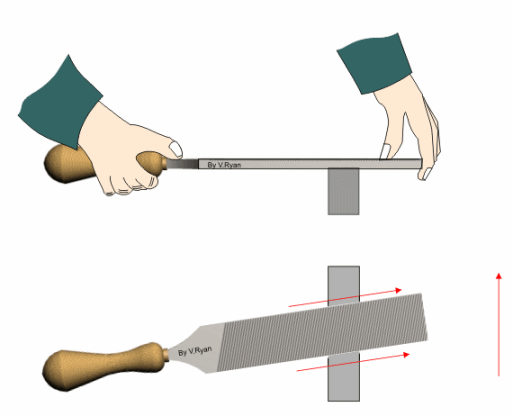I don't need to make a video demonstrating the correct way to use a file. I don't need a picture to show you how either. All I have to do is tell you in plain black lettering to NEVER EVER PULL ON A FILE. The whole world needs to know this.
I've seen some very good mechanics on YouTube that have been professional mechanics for 30 or 40 years and even THEY don't know how to use a file. It's pure torture for a person like me to have to watch. A file is designed to cut metal on the FORWARD STROKE ONLY. As soon as you have made your cut, LIFT THE FILE OFF the work and prepare to make your next cut. A file is NOT SANDPAPER. Think of a file as more like a cheese grater.
You people out there have two choices:
1. Use the file incorrectly and have your file get dull quick, or. . . .
2. Use the file correctly the way as it was designed to and remove MORE
material at a FASTER rate than you'd do if you were using it incorrectly.
I had to get that off my chest.

I've seen some very good mechanics on YouTube that have been professional mechanics for 30 or 40 years and even THEY don't know how to use a file. It's pure torture for a person like me to have to watch. A file is designed to cut metal on the FORWARD STROKE ONLY. As soon as you have made your cut, LIFT THE FILE OFF the work and prepare to make your next cut. A file is NOT SANDPAPER. Think of a file as more like a cheese grater.
You people out there have two choices:
1. Use the file incorrectly and have your file get dull quick, or. . . .
2. Use the file correctly the way as it was designed to and remove MORE
material at a FASTER rate than you'd do if you were using it incorrectly.
I had to get that off my chest.



